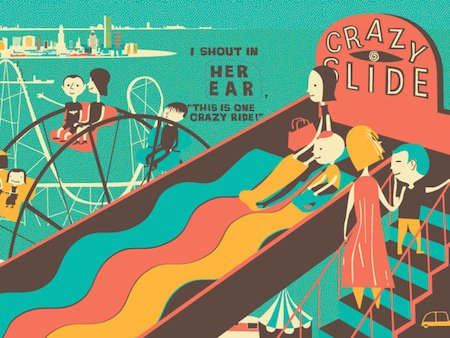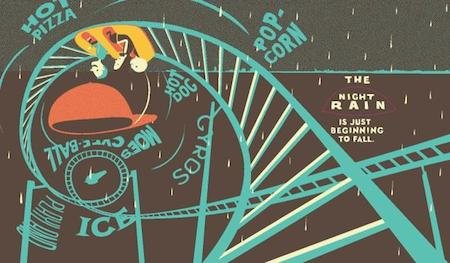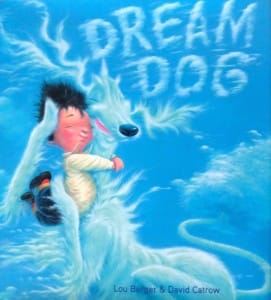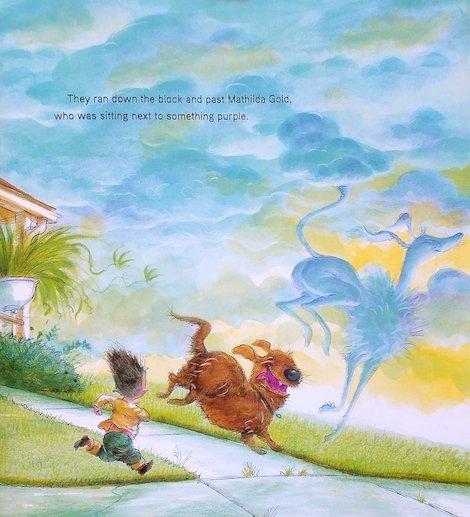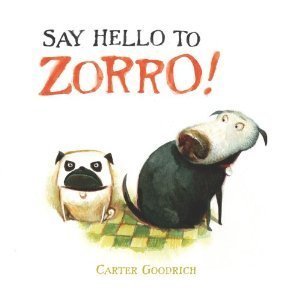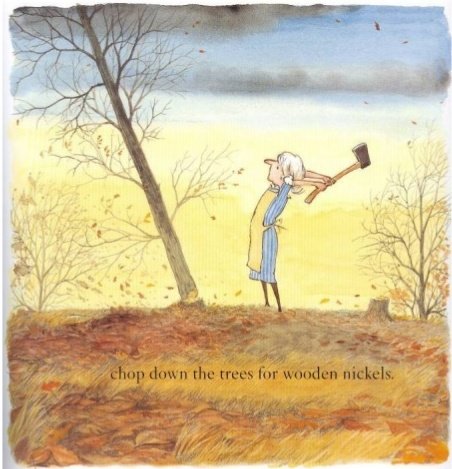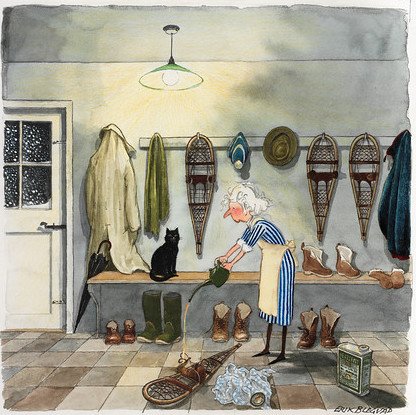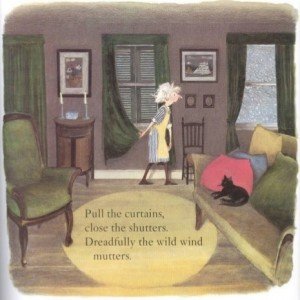Originality in children’s picture book illustration is a rarity, so when it comes around, it knocks your socks off, or sandals, depending on the weather. Outstanding in the Rain, Frank Viva’s newest book and the fifth in four years by this Toronto-based designer and illustrator, already feels like a classic, with the visual pop of a beloved mid-century picture book, re-imagined and re-energized for modern tastes. It is zingy and a little loopy, and I guarantee there is nothing else like it on the shelves, unless you include Viva’s previous books, and even then, Outstanding in the Rain is still entirely its own wonderful thing.
I think the word that best describes Outstanding in the Rain, and all of Viva’s work, is inventive. And then – pick your adverb: playfully, beautifully, delightfully, knee-slappingly, humourously, ridiculously…ETC. The inventiveness, in this particular case, is not in the story but in how the story is told. A boy and his family spend the day at an amusement park (Coney Island) celebrating his birthday, going on rides, eating junk food, playing on the beach, and getting caught in the rain. A typical carnival narrative, which is secondary to the wordplay evoked by the clever use of momentum-building die-cuts: ICE CREAM becomes OH NO I SCREAM on the next page (as a result of a toppled cone), followed by THOSE SANDWICHES THERE to ON THE SAND WHICH IS THERE, and so on. As each page is turned, the die-cut frames an image from the previous page, transforming it into an entirely new thing. To quote the book jacket, Outstanding in the Rain, itself a play on words, is ‘A Whole Story With Holes’.
It is also a whole story with a whole lotta beautiful art. With relatively few words in the book, and an equally minimalistic (but definitely not subdued) palette, the story still feels big and boisterous. It is a cartoon without being cartoonish. Perhaps it is the highly stylized shapes – loosely human and loosely architectural – where nothing is detailed but a lot is going on and everything is recognizable (if not comically exaggerated). Or the graphic sensibility that underpins the design, even as it simultaneously plays with it. One thing is obvious: Frank Viva is a master of colour. His books vibrate. This is particularly true with Outstanding in the Rain, which has (I swear) an audible hum as the blocks of turquoise, umber and orange spark and bump up against each other on the page. For children and adults, the book demands multiple reads to take in all the narrative and visual mischief. Outstanding in the Rain is, in short, a carnival, and twice as much fun.
I have a theory. Outstanding in the Rain is either number three of a trilogy or part of an ongoing series. In Along a Long Road, the cyclist passes an ice cream truck (and, I should add, an amusement park). In A Long Way Away, there is an ice cream truck, perhaps the same truck, on a road. In Outstanding in the Rain, an ice cream shop is front and centre. Either it is intentional and this book is connected to the others by the appearance of ice cream in one form or another, or Frank is subconsciously controlled by frozen desserts. If it’s the former, bravo, if it’s the latter – Mr Viva…I can relate.
 Frank Viva is an award-winning illustrator, designer, and presumed ice-cream lover. His brilliant work frequently graces the covers of The New Yorker, and other magazines. According to his website, Frank also likes bikes and public transit, and is the founder and managing director of Viva & Co.
Frank Viva is an award-winning illustrator, designer, and presumed ice-cream lover. His brilliant work frequently graces the covers of The New Yorker, and other magazines. According to his website, Frank also likes bikes and public transit, and is the founder and managing director of Viva & Co.
Outstanding in the Rain by Frank Viva. Published by Tundra Books, 2015
Other reviews (click on links):
Young Frank Architect by Frank Viva (Museum of Modern Art, 2013)
A Long Way Away by Frank Viva (HarperCollins, 2013)
Along a Long Road by Frank Viva (HarperCollins, 2011)
Here’s a wonderful article from the New Yorker about the creation of Outstanding in the Rain

